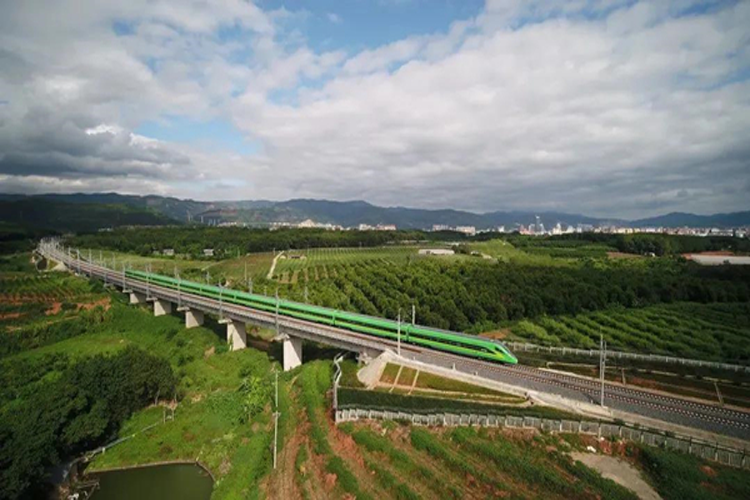On December 3, the CCCG-built China-Laos Railway opened to traffic.
The China-Laos Railway starts from Kunming, Yunnan Province to Vientiane, the capital of Laos, with a total length of about 1,035 kilometers, consists of the Kunyu section and the Yumo section in China and the Boten–Vientiane section in Laos. The railway is an important part of the central line of the Pan–Asia railway. It is also the first international railway that is invested and operated mainly by Chinese enterprises with Chinese standards, and Chinese equipment. It is directly connected to the Chinese railway network.
The 19th section of the Yumo railway built by CCCC First Harbor Engineering Company Ltd is 27.5 kilometers long and located in the mountains of the Hengduan Mountains, with 99% bridge and tunnel ratios, including 93% of tunnels among the whole line, both of which are the highest in the entire Yuma section. With the worst geological conditions of the whole line, the section is the most difficult one.
The 17th section of the Yumo railway constructed by CCCC Second Harbor Engineering Company Ltd is located in Jinghong City, Xishuangbanna Prefecture, Yunnan Province, with a total length of about 14.7 kilometers, of which the key project of the whole line—Xishuangbanna tunnel is about 10.68 kilometers long, and the part built by CCCC is 6.53 kilometers long.
Since entering the site in April 2016, CCCCers have overcome a series of world-class construction difficulties including large deformation of soft rocks and successfully completed the construction of the Yumo railway.
After China-Laos Railway's opening, Pu’er Cit and Xishuangbanna Prefecture will end the history of no railways, and it will take just over 3 hours from Kunming to Jinghong City of Xishuangbanna Prefecture. People are expected to travel from Kunming to Vientiane, Laos in one day. The China-Laos Railway will become an important international corridor from Kunming to Vientiane, Laos, radiating Southeast Asia, which is of great significance to transform Laos from a land-locked to a land-linked country, improve the efficiency of local transportation, promote the connectivity between China and neighboring countries, promote the building of China-ASEAN Free Trade Area, implement China's Great Western Development Strategy, and boost regional economic and social development along the route.

